
Station Name: NEWTON POPPLEFORD[Source:
Nick Catford]
poppleford_old10.jpg) Newton Poppleford station seen from Station Road bridge in early 20th century. Initially, goods services were basic with a single siding and no dock or goods shed. Sacks are seen being loaded directly onto a truck from a wagon in the siding.
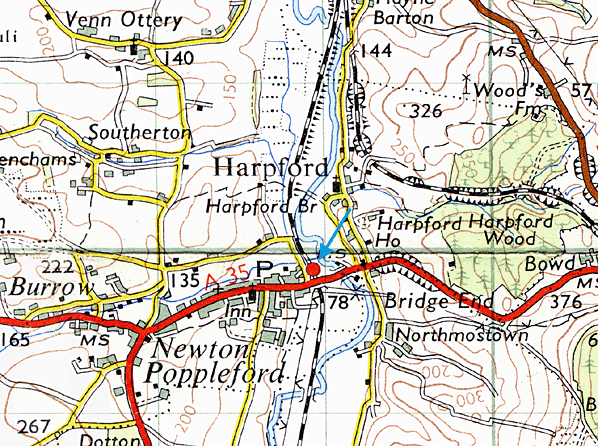 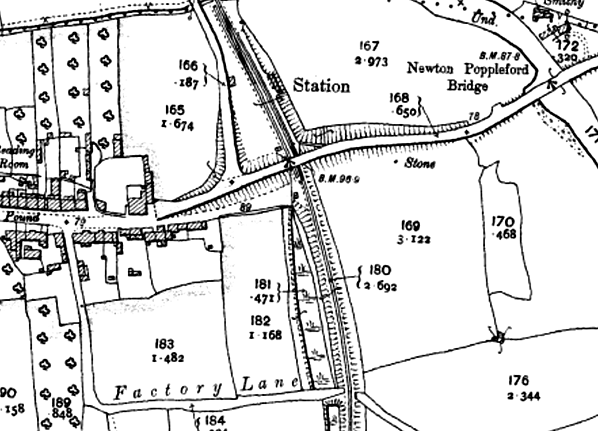
1905 1:2,500 OS map shows the layout of the station as built. There is one siding parallel with the running line with a head shunt at the north end. There are only two small buildings in the yard, one is a platelayers; hut (left) and the other, alongside the road is probably a goods office.
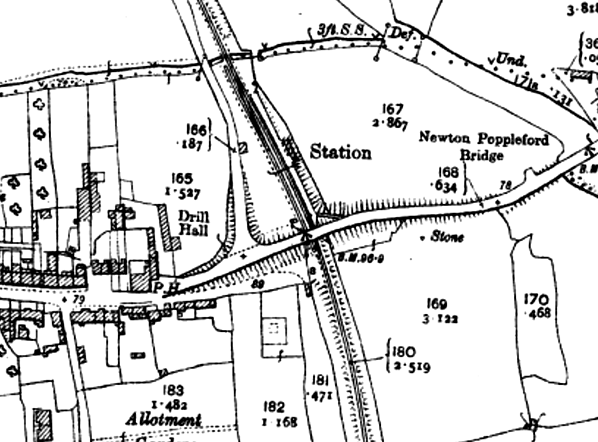
1932 1:2,500 OS map shows nothing has changed since 1905.
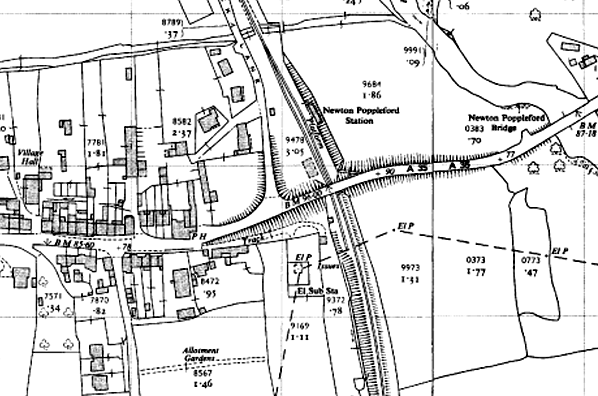 1957 1:2,500 OS map shows the siding has been extended under the road bridge, this was often used for a camping coach, The goods office has been demolished and a grain store has been built. Photographic evidence shows this was two-bay buildings with a wooden loading dock. There
has been a small amount of residential development close to the station. poppleford_old3.jpg)
Newton Poppleford station looking north from Station Road bridge in March 1955. Two wagons are seen alongside the grain store loading dock,
Photo from John Mann collection poppleford_old5.jpg)
poppleford_old6.jpg)
Newton Poppleford station c1950s.
Photo from John Mann collection poppleford_old7.jpg) Newton Poppleford station looking south c1950s.
Photo from John Mann collection poppleford_old11.jpg) A southbound passenger train waits at Newton Poppleford station in June 1959.
Photo from John Mann collection poppleford_old8.jpg)
A Tipton St. Johns train pulls into Newton Poppleford station in August 1963. The grain store with its timber loading dock is seen on the left.
Photo
by Peter Gray
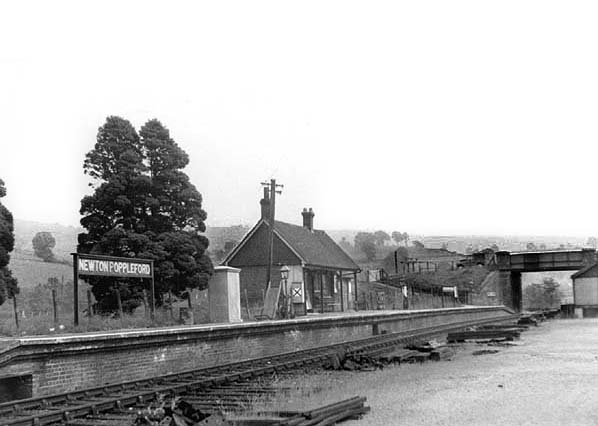 Newton
Poppleford station looking south in June 1965. The goods yard closed on 27 January 1964 and the siding has been recently lifted.
Copyright photo by John Alsop 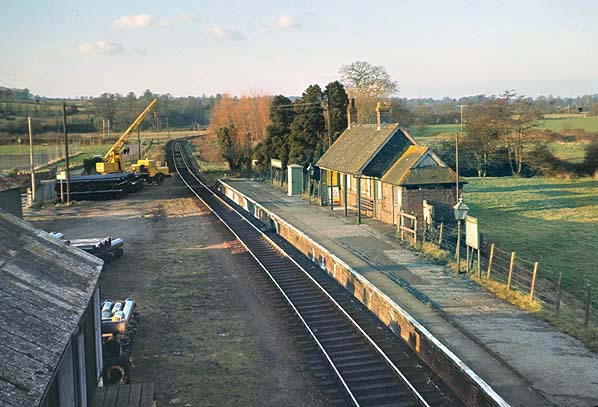 Newton
Poppleford station looking north in February 1967, a few weeks before the station closed.
Photo by Bernard Mills 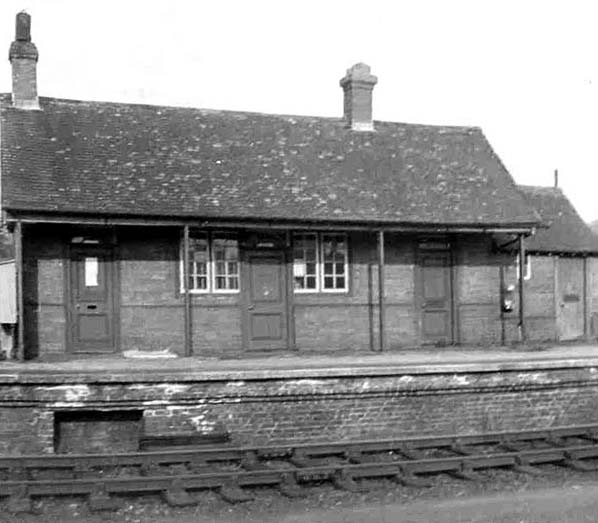
Newton
Poppleford station in 1968, a year after closure
Photo by Paul Tebbett 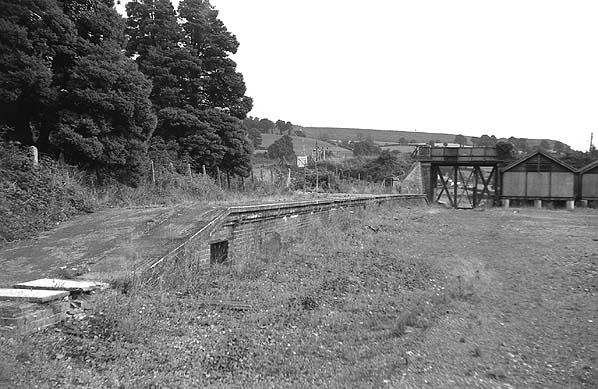
Newton
Poppleford station looking south in August 1969. Note the strengthening under the bridge. The two-bay grain warehouse standing on staddle stones is seen on the right
Photo by Nick Catford 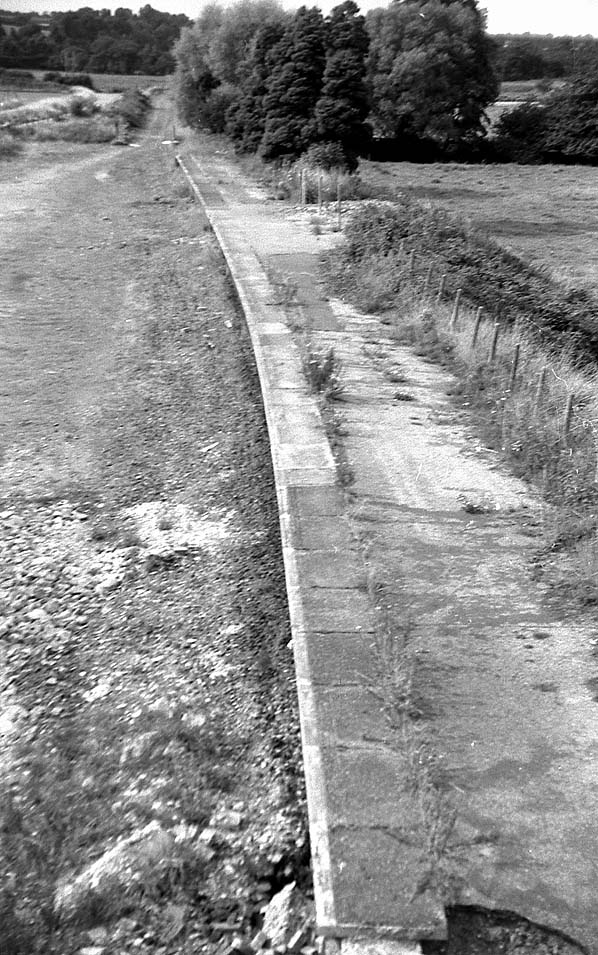
 Home
Page Home
Page
|









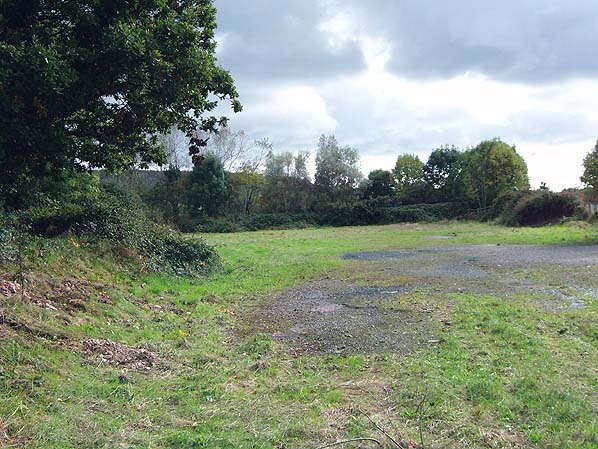
poppleford_old_thumb9.jpg)

